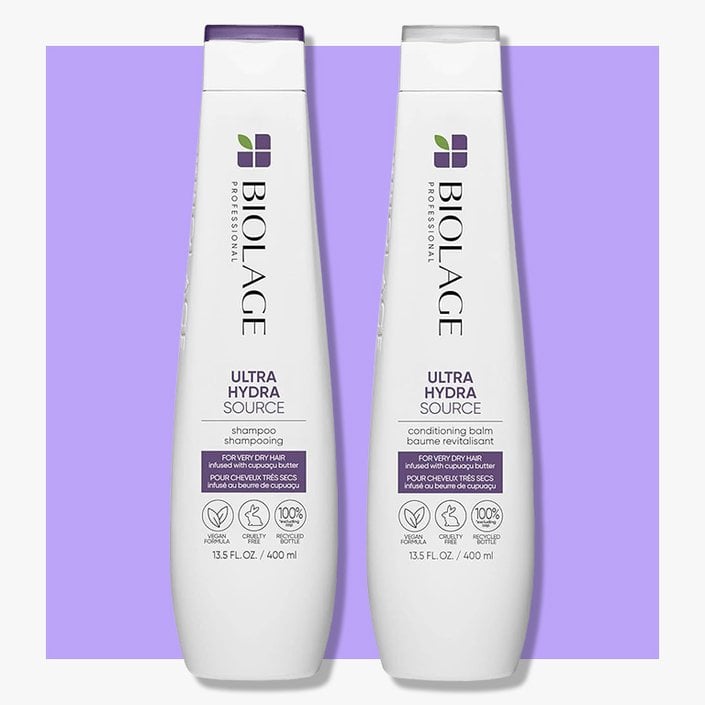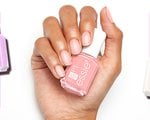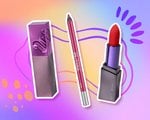How To Style Thick Hair: Tips, Tricks, and Things To Avoid
November 05, 2024
If your mane is ultra-thick and hard to manage, you may be tempted to just stick it in a bun or ponytail so you don’t have to bother with it. But the right haircut—and a few tweaks to your styling routine—could be the key to a more manageable mane. Here are four things you may want to consider when styling thick hair.
1. Get a layered haircut
Those who have extremely thick hair often find that their mane feels heavy, even if it’s on the shorter side. Getting a layered haircut can help remove some of that weight (and bulk) without sacrificing your length. This small change makes styling a much less tedious task—and helps ensure that your hair is voluminous in all the right places.
If you want a shorter cut, consider asking your stylist for a textured lob. This piecey cut usually hits around the collarbone and boasts soft layers cut throughout for body, texture, and movement. The classic shag is another great option for those with thick hair. The retro haircut for thick hair features choppy layers that remove bulk and give your hair a tousled, rock-and-roll feel. If your hair is wavy or curly, styling this cut is also a breeze—it’s made to look a little messy, so in many cases, all you’ll need is a curl-defining leave-in to help enhance your natural texture.
Those looking to rock longer hair may want to try face-framing layers. With this cut, your stylist will cut soft layers into the pieces that surround your face to remove unnecessary weight and help accentuate your features. Your layers can start anywhere from the cheekbones to the jawline—we suggest asking your stylist what approach they think is best based on your hair type and styling preferences.
2. Use frizz-fighting products
Generally, those with thick hair are more likely to experience frizz—and this goes double for those with thick, curly hair. One way to combat those flyaways is by incorporating an anti-frizz serum into your styling routine. We like the Biolage Professional Smooth Proof Serum. Work a pump of the luxe formula throughout your hair when it’s damp and dry as usual for long-lasting frizz and humidity control, plus tons of healthy-looking shine.

3. Let your hair air dry (partially)
Blow-drying can be a serious arm workout when you have thick hair. One way to cut down on styling time—and to give your arms a break—is to let your hair air dry until it’s 70 to 80% dry, then go in with your blow dryer and brush. This trick will give you better results and will have you out the door much faster. To help shield your hair from unnecessary damage, set your blow dryer on the lowest heat setting and prime your hair with a heat protectant, such as the Biolage Professional Hydra Source Blow Dry Shaping Lotion.

4. Thin out your hair
If you don’t want to embrace a new chop but find your thick hair is harder to manage than you’d like, consider simply asking your stylist to thin out your hair. This simple technique is one of the easiest ways to make thick hair look thinner without going shorter or cutting obvious layers. To thin your hair, your stylist will use special shears to remove bulk from specific areas of hair. The process is similar to layering, only you won’t see any noticeable difference in your hairstyle or length—your strands will simply appear a bit less poofy (and be much easier to manage).
6 Common Mistakes To Avoid with Thick Hair
When it comes to how to manage thick hair, knowing what not to do is just as important as knowing what you should do. Here are six mistakes people commonly make when styling thick hair and what you should do instead.
1: Thinning thick hair out too much
Thinning shears can be a godsend for those who often find themselves wondering how to style thick, coarse hair without too much effort—but as with anything, balance is key. If you thin out your hair too much, it could leave your mane looking frayed or uneven. An improper approach can also create uneven-looking strands or unintentionally create volume where you don’t want it. If you decide to thin out your hair, be sure to visit an experienced stylist and bring plenty of inspiration photos so they know what you’re aiming for. And don’t be afraid to speak up if you think you and your stylist are on different pages—communication is key.
2. Picking the wrong haircut for your needs
If you’ve been toying with the idea of a super-short cut to make your thick hair more manageable, you should know that shorter hair doesn't always mean less work. For a shorter style that will work well with thick hair, try a bixie haircut—length-wise, it falls between a pixie and a bob and often features flattering choppy layers cut throughout for texture and movement. Aside from being totally on-trend, this haircut helps to distribute the weight of your hair more evenly and tends to be easier to style than either a pixie or a bob.
3. Not using the right shampoo and conditioner
While thick hair needs lots of hydration to ward off frizz and keep it shiny and healthy-looking, it’s important to be selective with the products you use. Anything too heavy could weigh your hair down, which may make it look limp and put a damper on your natural (and truly enviable) volume.
For that reason, we suggest lathering up with a lightweight, hydrating shampoo, such as the Biolage Professional Ultra Hydra Source Shampoo. It’s designed specifically for thick, coarse hair and provides a gentle cleanse to leave the hair feeling soft and moisturized. Pair it with the coordinating Biolage Professional Ultra Hydra Source Conditioning Balm, which helps control volume, improves manageability, and leaves the hair soft and shiny.

4. Getting it chemically straightened
If you have thick hair and have gotten chemical straightening treatments in the hopes that it will make your hair easier to style, you know that these treatments can change the natural texture of your hair. The result is possibly compromised, over-processed, hard-to-manage hair. There are ways to accentuate and embrace your natural thick hair texture, and it all starts with using the right styling products.
The key is opting for lightweight stylers that won’t weigh down thick hair even more. We recommend the Biolage Professional Hydra Source Styling Mousse. The medium-hold formula adds body and movement while helping to fight style-sabotaging frizz. Plus, it boasts a conditioning formula that those with dry, thick hair will love.

5. Avoiding layers
Finding the right haircut for thick hair can be a challenge, but as we mentioned before, it’s hard to go wrong with long layers. Layers help remove unnecessary weight, give your thick hair shape, and help minimize bulk and poofiness around the face. The right technique can even help accentuate your natural hair texture, particularly if you have waves or curls.
6. Wearing it up too often
When you don’t feel like styling your thick hair, you may be tempted to just throw it all into a high ponytail or messy bun. Every now and then, that’s totally fine. However, repeatedly wearing your hair in the same hairstyle can lead to breakage from where the elastic holds your strands in place. And if your chosen lazy-day hairstyle is tight, you could also risk pulling out your hair at the scalp. For an easy hairstyle that won’t pull, tug at, or otherwise damage your thick hair, try a long, loose braid. Start by working the Biolage Professional Ultra Hydra Source Daily Leave-In Cream throughout your lengths and ends, then weave your strands into a loose plait. Secure the braid with a silk or satin scrunchie at the ends of your hair—the slippery texture of these fabrics is less likely to snag your hair than a traditional elastic band.

Read more
EXPLORE BY TOPICS AND BRANDS
- Hair
- Hair Styling
- Video Embed
- Embedded Video




















.jpg?cx=0.5&cy=0.5&cw=150&ch=120&blr=False&hash=27326E4FE66B0A2BFABAF4995DA29DC5)








